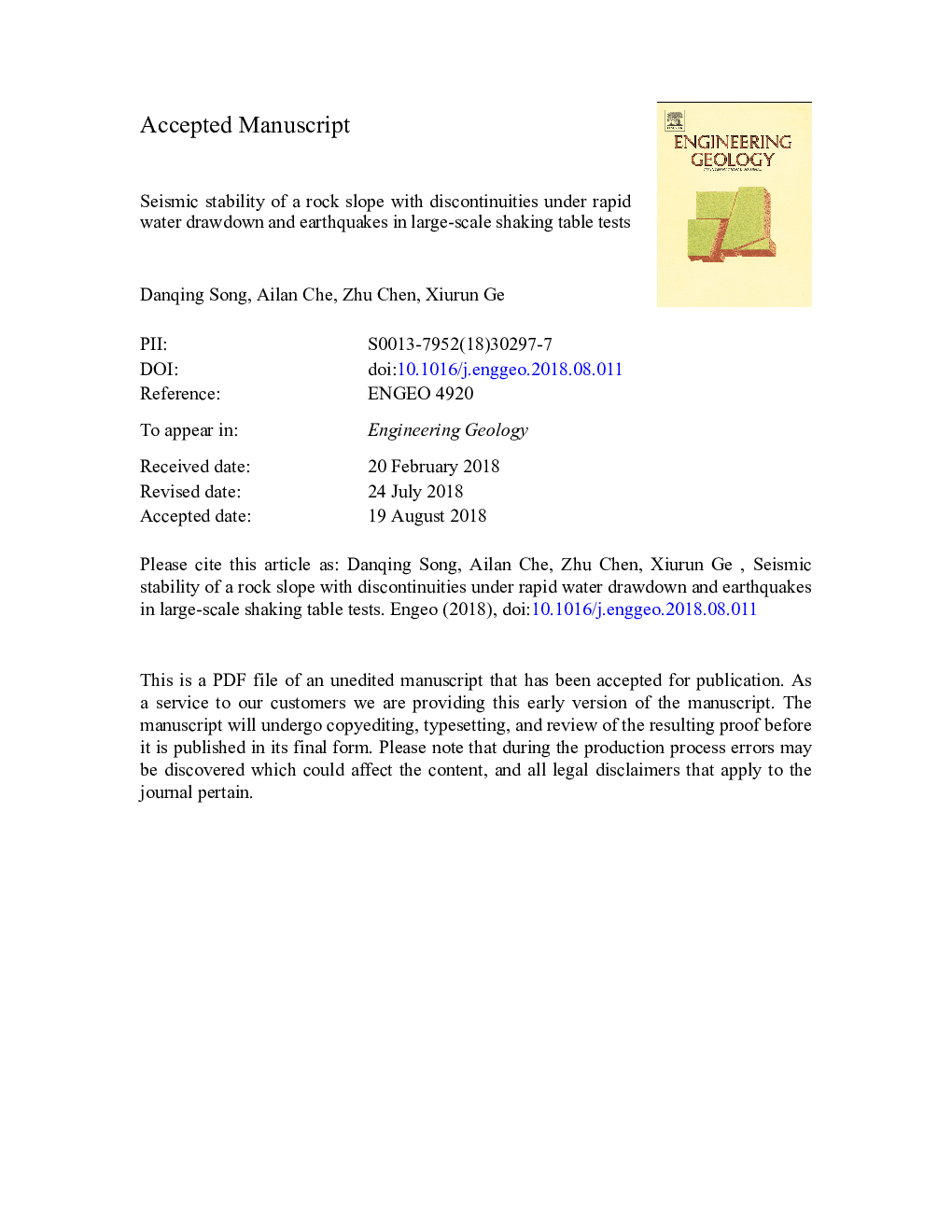| Article ID | Journal | Published Year | Pages | File Type |
|---|---|---|---|---|
| 10130551 | Engineering Geology | 2018 | 37 Pages |
Abstract
A series of large-scale shaking table tests was performed to clarify the dynamic stability of a rock slope with discontinuous structural surfaces under rapid water drawdown. A wave absorber consisting of a porous sponge and iron gauze was used to eliminate the adverse effects of water waves in the tests. The results show that the slope surface, elevation, surface microtopography, and bedding structural surface have an impact on the amplification effect of the slope. MPGA (the acceleration amplification coefficient) has a positive correlation with the peak acceleration of the input wave. The damage evolution process of the slope during earthquakes can be identified and includes three stages: formation of tiny cracks (0.074-0.148â¯g), crack propagation in the surface slope (0.148-0.297â¯g), and sliding failure (0.297-0.446â¯g). According to the acceleration vectors of the blocks, the differences in the acceleration vectors between adjacent blocks were the main trigger of the slope deformation during earthquakes. P- and S-waves mainly induced the uneven settlement deformation and horizontal sliding movement of the surface slope under the horizontal and vertical seismic loads, respectively. According to the analysis of ÎMPGA (the increment of MPGA) after rapid drawdown occurred, rapid drawdown mainly has a considerable impact on the surface slope between the high and low water levels during earthquakes, particularly from 0.148 to 0.297â¯g; however, its impact began to decrease after the occurrence of failure deformation from 0.297 to 0.446â¯g. Moreover, the relationship between the structural surface and the dynamic failure mode was identified.
Related Topics
Physical Sciences and Engineering
Earth and Planetary Sciences
Geotechnical Engineering and Engineering Geology
Authors
Danqing Song, Ailan Che, Zhu Chen, Xiurun Ge,
